Review: Metal Gear Solid V: The Phantom Pain
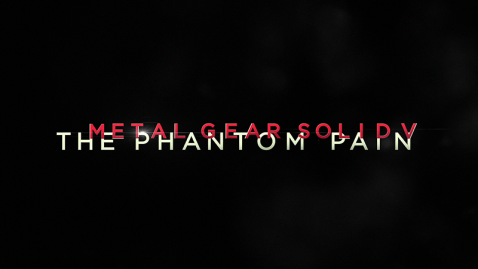 There are certain things you can expect from a Metal Gear Solid game, or at least I thought you could until now. Five games in and many of the conventions that have defined Heido Kjoima’s iconic series are notably different in his latest title. But different doesn’t mean bad – and the focus on sharp mechanics and unique open world missions creates an astoundingly deep, involving experience with plenty of immersive new traits.
There are certain things you can expect from a Metal Gear Solid game, or at least I thought you could until now. Five games in and many of the conventions that have defined Heido Kjoima’s iconic series are notably different in his latest title. But different doesn’t mean bad – and the focus on sharp mechanics and unique open world missions creates an astoundingly deep, involving experience with plenty of immersive new traits.
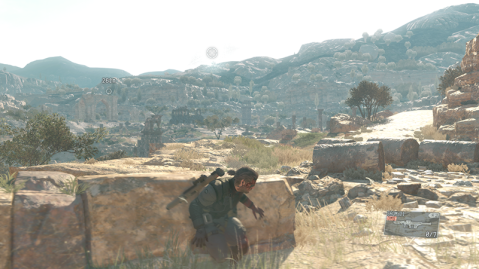 Three days into my Metal Gear Solid V experience and I’m talking to a friend about the game. The first thing he asks is how long the longest cutscene has been so far. The answer? Disappointingly not very long. Maybe ten minutes.
Three days into my Metal Gear Solid V experience and I’m talking to a friend about the game. The first thing he asks is how long the longest cutscene has been so far. The answer? Disappointingly not very long. Maybe ten minutes.
He hasn’t played Peace Walker, and after that and Ground Zeros, The Phantom Pain makes a lot of sense. But looking at the numbered titles it’s a very significant departure from Metal Gear Solid 4; a game that took the series’ well known story-focused ethos to the extreme.
It’s of course a good thing that Kojima is still trying new things. Metal Gear Solid V is an undeniable success; an open world triumph, and a game capable of delivering truly unmatched levels of immersion. The graphics are superb, the effects are stunning, and the level of detail is astounding. The overall impression this creates is immensely impressive, and everything considered the game currently stands at the absolute peak of videogame innovation.
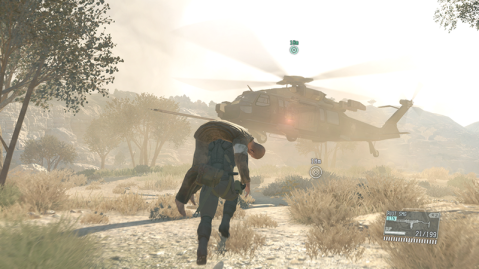 Mechanically the game is, as expected, familiar to last year’s Ground Zeroes – the prologue to the experience. Many of Snake’s navigational skills and abilities do however make more sense in the context of a fully open world environment. There’s an element of strategy that was hinted at within Camp Omega, but is only fully realised when allowed to unfold across The Phantom Pain’s huge maps.
Mechanically the game is, as expected, familiar to last year’s Ground Zeroes – the prologue to the experience. Many of Snake’s navigational skills and abilities do however make more sense in the context of a fully open world environment. There’s an element of strategy that was hinted at within Camp Omega, but is only fully realised when allowed to unfold across The Phantom Pain’s huge maps.
With each mission there’s genuine room for player input regarding how it will be undertook. From gathering intel to choosing a plan of attack, deciding what time of day to strike and what gear to bring – there’s a level of interaction that’s not only new for the series, but feels far deeper than what you can usually expect from the genre.
And as well as undergoing missions on the ground, Snake is also in charge of running Mother Base, a task familiar to anyone who has previously played Peace Walker. The Fulton surface-to-air recovery system returns and Snake can extract enemies from the field and set them to work on tasks such as developing new weapons and items.
There’s a lot to like about this set-up, and every stealthy takedown and extraction gives a sense of progress, but it’s far from perfect. As with Peace Walker the best gear requires the base to be built up substantially, and there’s some irony to the fact that unlocking heavy artillery requires the player to excel at non-lethal takedowns. I’d be checking base to see what new kit I could build and be disappointed to find new assault rifles and shotguns when all I really needed was a silencer for my tranquilliser that wouldn’t run out after about three shots.
 Still, these are minor complaints regarding a game that’s great fun to play. It’s highly engaging thanks to intelligent A.I and the lack of a radar, requiring the player to either scan and monitor the environment for enemies or train a dog to do this for them. Again, this is a departure from the series’ classic mechanics (where you couldn’t so much as look more than two meters directly in front of you), but in this area the game feels highly evolved. Of the first three games the experience is most reminiscent of Metal Gear Solid 3 thanks to its largely natural setting and some similar looking bases. Comparing the two and it’s easy to see how many great improvements have been made. Meanwhile the Mother Base oil rig draws a surprising comparison to the Big Shell in Sons of Liberty. If Konami ever decided to do a full-on remake then they’ve already got about half the assets, and the updated mechanics would work wonders alongside Metal Gear Solid 2’s classic storyline.
Still, these are minor complaints regarding a game that’s great fun to play. It’s highly engaging thanks to intelligent A.I and the lack of a radar, requiring the player to either scan and monitor the environment for enemies or train a dog to do this for them. Again, this is a departure from the series’ classic mechanics (where you couldn’t so much as look more than two meters directly in front of you), but in this area the game feels highly evolved. Of the first three games the experience is most reminiscent of Metal Gear Solid 3 thanks to its largely natural setting and some similar looking bases. Comparing the two and it’s easy to see how many great improvements have been made. Meanwhile the Mother Base oil rig draws a surprising comparison to the Big Shell in Sons of Liberty. If Konami ever decided to do a full-on remake then they’ve already got about half the assets, and the updated mechanics would work wonders alongside Metal Gear Solid 2’s classic storyline.
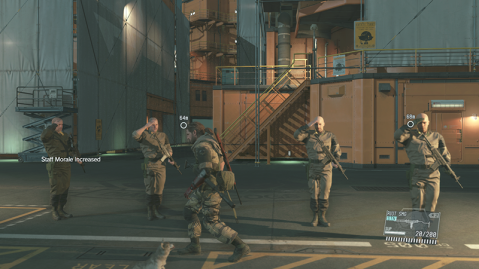 When it comes to story, this time around you’re talking about the one area in which the game under delivers. This is on two accounts; not enough plot, and what there is not being as good as usual. Metal Gear Solid V is a basic revenge story where the narrative takes a backseat for most of the game and barely explains the motivation for many of its events. Getting revenge on Cipher requires an army… the contract work in Afghanistan begins!
When it comes to story, this time around you’re talking about the one area in which the game under delivers. This is on two accounts; not enough plot, and what there is not being as good as usual. Metal Gear Solid V is a basic revenge story where the narrative takes a backseat for most of the game and barely explains the motivation for many of its events. Getting revenge on Cipher requires an army… the contract work in Afghanistan begins!
Even though theoretically simple, everything is made complicated by the addition of surreal supernatural elements that don’t quite fit as well as they usually do. Compared to the circus of Metal Gear Solid 3, where each encounter was stranger than the last, Metal Gear Solid V decides to hit overdrive at the very beginning during its hospital-massacre-tutorial, before leaving its supernatural antagonists as unexplained entities that pop up every now and then because they have magical powers or something.
 Perhaps the main reason the story feels light is the lack of extended codex sequences – which filled out and elaborated on the narrative in the earlier games. And maybe I’m just being cynical but I do wonder if this has anything to do with the fact that Snake is now voiced by an A-list actor. He’s now oddly quite, quiet in the way you’d expect it to be if it cost Konami quite a lot of money every time he opened his mouth. Miller, he won’t shut up, but Snake is more of a listener this time around.
Perhaps the main reason the story feels light is the lack of extended codex sequences – which filled out and elaborated on the narrative in the earlier games. And maybe I’m just being cynical but I do wonder if this has anything to do with the fact that Snake is now voiced by an A-list actor. He’s now oddly quite, quiet in the way you’d expect it to be if it cost Konami quite a lot of money every time he opened his mouth. Miller, he won’t shut up, but Snake is more of a listener this time around.
Don’t get me wrong, I’m a Kiefer Sutherland fan and I’ve seen all nine series of 24. But Snake already had a voice actor, one who did an excellent job in seven Metal Gear games that span fifty years of story and twelve years of releases. I was a bit unsettled by the strange Jack-Bauer-doing-his-Snake-impression in my original Ground Zeroes review, and now more time has passed I can say with certain that I do not like the decision not to use David Hayter one bit. Alongside my suggested Metal Gear Solid 2 remake they should make a David Hayter fan patch dub for this one. The ideas keep on coming.
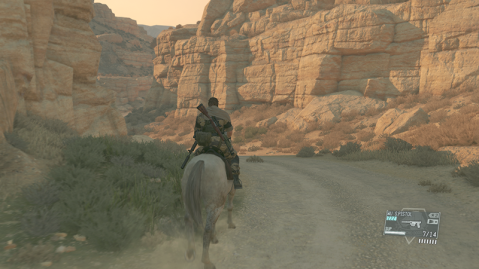 I realise my concerns are those of a crazy Metal Gear Solid fan; I really like these games and I’ve played them a lot, so naturally I have all these weird issues that won’t bother a lot of people. But they haven’t clouded my judgement on the most important area of Metal Gear Solid V; how it actually plays. Here the game is a triumph – a true marvel of what a videogame can achieve. It’s a detailed and realistic game that sets a new standard for immersion and engagement. It may leave behind some of the mechanics found in the earlier games, but it expands on the more recent ones in every way. Imagine the best version of Metal Gear Solid: Peace Walker ever.
I realise my concerns are those of a crazy Metal Gear Solid fan; I really like these games and I’ve played them a lot, so naturally I have all these weird issues that won’t bother a lot of people. But they haven’t clouded my judgement on the most important area of Metal Gear Solid V; how it actually plays. Here the game is a triumph – a true marvel of what a videogame can achieve. It’s a detailed and realistic game that sets a new standard for immersion and engagement. It may leave behind some of the mechanics found in the earlier games, but it expands on the more recent ones in every way. Imagine the best version of Metal Gear Solid: Peace Walker ever.
9/10
Tags: Metal Gear, metal gear solid, Metal Gear Solid 5, Metal Gear Solid 5 pc, Metal Gear Solid 5 review, Metal Gear Solid 5 The Phantom Pain, metal gear solid review, Metal Gear Solid The Phantom Pain, Metal Gear Solid V, Metal Gear Solid V review, Metal Gear Solid V The Phantom Pain, playstation, PS4, review, The Phantom Pain, Xbox One
2 responses to “Review: Metal Gear Solid V: The Phantom Pain”
Leave a comment Cancel reply
Recent Posts
About Dracula’s Cave
Categories
Recent Comments
Twitter Feed
My TweetsArchives
- January 2022
- March 2021
- October 2020
- November 2019
- November 2018
- September 2018
- January 2018
- December 2017
- November 2017
- July 2017
- May 2017
- March 2017
- February 2017
- January 2017
- October 2016
- September 2016
- August 2016
- July 2016
- June 2016
- May 2016
- April 2016
- March 2016
- January 2016
- December 2015
- November 2015
- October 2015
- September 2015
- August 2015
- July 2015
- June 2015
- May 2015
- April 2015
- March 2015
- February 2015
- January 2015
- December 2014
- November 2014
- October 2014
- September 2014
- August 2014
- July 2014
- June 2014
- May 2014
- April 2014
- March 2014
- February 2014
- January 2014
- December 2013
- November 2013
- October 2013
- September 2013
- August 2013

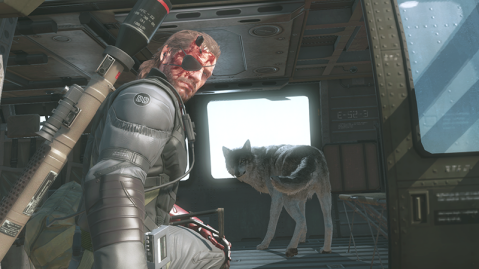
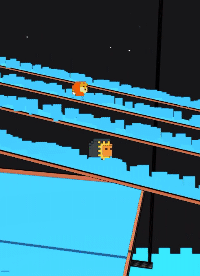




The lack of radar worries me as I have a poor sense of direction. I don’t know if the lack of chatter is due to Sutherland’s wage. Isn’t the Japanese version voiced by a less expensive actor so that wouldn’t factor into the equation?
Getting lost isn’t too much of a worry as you’ve got markers and stuff to help out! It’s mainly keeping track of the enemies the radar really helps out with.
I did think about the Japanese voice actor, although due to the popularity and importance of the western release it could impact decisions on how the game is made maybe? But there were probably other factors too that went into this decision and I’d imagine you’re right that it’s not just based on the ££.